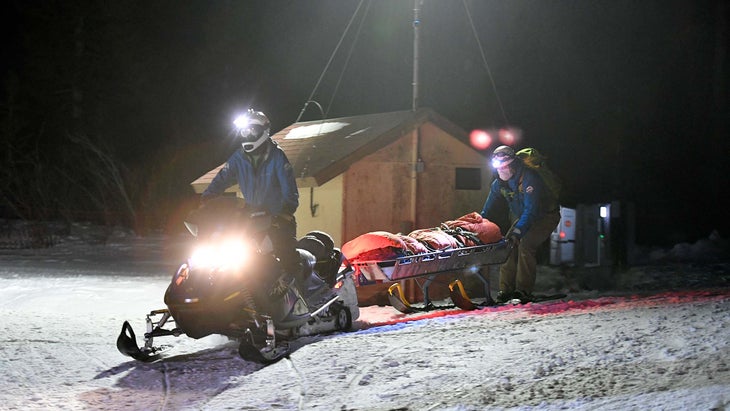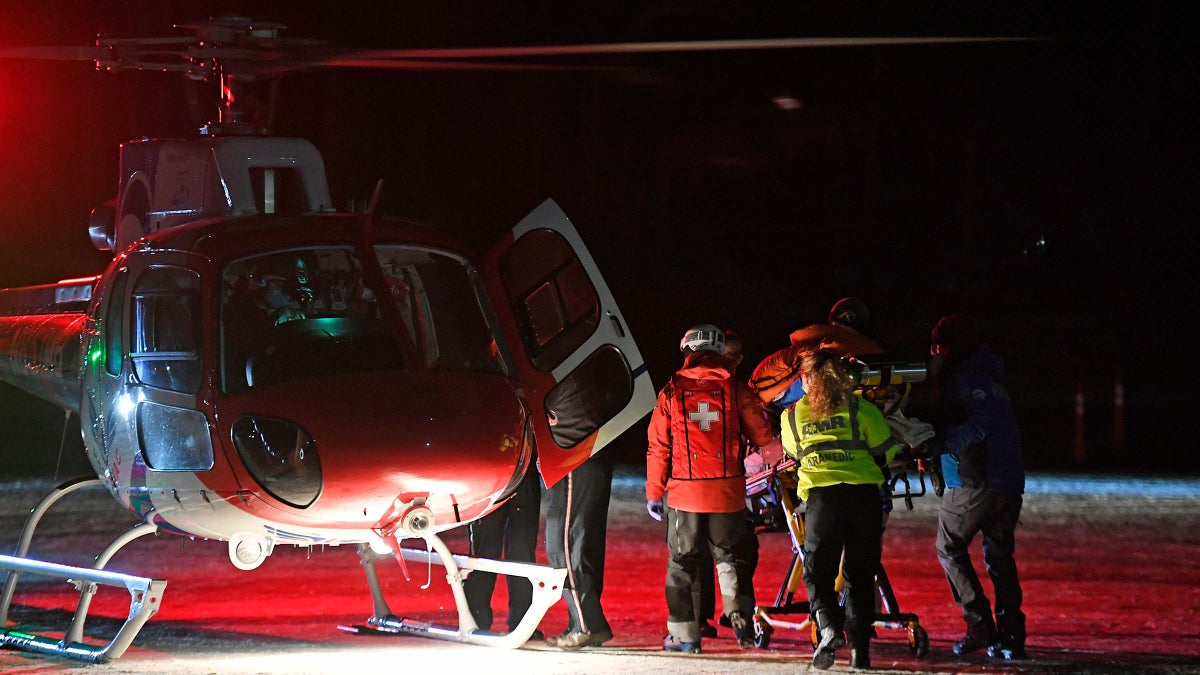Products You May Like
Receive $50 off an eligible $100 purchase at the Outside Shop, where you’ll find gear for all your adventures outdoors.
Sign up for Outside+ today.
In Colorado, where the number of outdoor users is quickly outpacing the bandwidth of local search and rescue (SAR) teams, volunteer rescuers aren’t just unpaid—they’re spending over $1,500 of their own money each year to save other people’s lives.
That’s according to a landmark new study conducted by Colorado Parks and Wildlife (CPW) in 2021, to investigate reports of burnout, underfunding, and legal vulnerabilities among many of the state’s 50 all-volunteer, nonprofit SAR teams.
“If left unaddressed, any one of these issues could result in a breakdown of the [backcountry search and rescue] system in Colorado,” the report states.
The Problem
Many backcountry users know that if they get stranded in the mountains or lost in the woods, they’ll have to rely on the grueling efforts of a search and rescue team to get them out. What many recreationists don’t understand is that the vast majority of backcountry SAR teams in the U.S. are unpaid volunteers. That’s in stark contrast to places like Europe, where backcountry SAR people are paid professionals, says Anna DeBattiste, public information officer for the Colorado Search and Rescue Association, the umbrella nonprofit that represents many of Colorado’s SAR teams and helps coordinate resource sharing across county lines during complex rescues.
“It’s different in other states, too,” she adds. “In New Hampshire, New Hampshire Fish and Game is responsible for rescue. They do most of it themselves and only call on additional volunteers when they need more manpower. The same is true in Vermont. But in most states, sheriffs would tell you they just wouldn’t be able to respond to rescues without the volunteers.”
That’s certainly true of Colorado, where teams are now responding to over 3,600 incidents every year—more than any other state. Those volunteers donate a collective 500,000 hours of unpaid labor every year, driving their own vehicles and spending their own money on gas and equipment to reach remote rescue sites. And those numbers don’t account for the personal tolls rescuers face.

“Volunteers can see some pretty tough stuff,” Battiste says. “There are body recoveries and, even worse, situations where someone is critically injured in our care for a long evacuation. Too many traumatic experiences—or even one traumatic experience without the right mental health resources—that can burn someone out.” According to the CPW study, more than two thirds of backcountry SAR volunteers in Colorado are at risk of burnout, and nearly half of all volunteers reported mental health challenges.
Compounding the issue? On many busy weekends, multiple rescue incidents happen simultaneously, leaving teams in adjacent counties unable to help one another or donate time or equipment. And even if they’re able to, sometimes sheriffs have to shut down requests for help simply because worker’s compensation plans don’t translate from one county to another.
“So if your team needs dogs or helicopters or technical climbers for a rescue, and you can’t get them from the county next door because of a worker’s comp issue, you have to go further and further out to find those resources,” DeBattiste explains. That can add hours to a rescue—time some critically injured patients just don’t have.
The Solution
After decades of watching these problems slowly worsen, Jeff Sparhawk, the executive director of the Colorado Search and Rescue Association, brought them to the attention of lawmakers, who ultimately directed CPW to conduct their 2021 study. Besides confirming the stresses on rescue personnel, the study found some serious funding gaps—and proposed some radical solutions.
“Currently, the vast majority of search and rescue funding comes from the Search and Rescue Fee that comes with our snowmobile and ATV registrations and our hunting and fishing licenses,” explains Bridget O’Rourke Kochel, spokesperson for CPW. “Even in 2020 [which saw a vast increase in new outdoor users], that was totaling about $600,000 over the year, which is really a drop in the bucket.”
Starting in 2023, CPW will launch a new funding project: the “Keep Colorado Wild Pass,” an optional add-on to vehicle registrations. That should make it easier for people from all user groups to easily donate to backcountry SAR efforts, Kochel says. CPW expects the program to increase state SAR funding five-fold.
Of course, even that might not be enough. Among other recommendations, the study calls for funding to reimburse all SAR personnel for their cell phone and vehicle use—a radical change from the status quo—and recommends more research into providing benefits like life insurance or even pensions for long-serving volunteers at some point in the future. The study also recommends providing Stress Injury Awareness training to all SAR volunteers and providing access to therapy and other mental health services. Finally, the study suggests revamping the current worker’s comp situation to streamline resource sharing.
All these solutions could pull Colorado SAR network from its current position at risk of collapse to one at the leading edge of modern, robust backcountry search and rescue in the U.S. And with the potential for exciting new legislation on the horizon, Battiste says this is just the beginning.
“There’s so much more work to be done, but this feels like a major first step,” he says.
